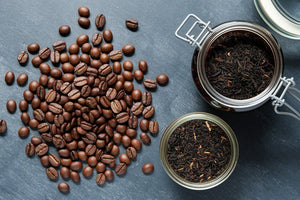
Chances are you have a rough idea what the Atkins diet is, and now you're hearing people talk about being on a 'keto' diet. But what does it mean? Is it an effective way of losing weight or just another fad diet?
What can you eat on a ketogenic diet?
The ketogenic diet is an extreme low carb diet plan which aims to aid weight loss through achieving a state called 'ketosis'. When your body is in a state of ketosis, it burns fat as fuel instead of carbohydrate and the theory is that this is a good way to drop body fat. However, it is an extremely complicated and scientific process and must be followed very strictly for it to work.
With regards to what you can eat, the keto diet is strictly high fat, low carb. To be more specific, nearly no carbs at all. As soon as you slip and eat a small amount of carbohydrates, your body will snap out of ketosis and you will pile on weight due to your body storing the carbs. Ketosis is a state our body adapts to naturally when food supplies are low; it is a form of starvation mode. Whenever the body is in starvation mode, it naturally wants to hold on to as much energy as possible because it thinks there's a low food supply. So if you slip up or eat a snack, you'll hold on to it more so than if you were not following a keto diet.
A typical keto meal plan will consist of eggs, bacon and other fatty meats, double cream and other high fat dairy, and vegetables. You strictly cannot eat any sugar so that means no fruit or junk food, no starch so no potatoes, beans, or legumes, and no grains so no bread or cereals. It is a ridiculously tough 'diet' to stick to and it is advised that you should employ the help of a trained physician or medical professional as it is so complicated. This is not a diet to be taken lightly and it is strongly recommended not to follow it if you have not done proper research first.

Is the ketogenic diet safe?
The ketogenic diet was actually originally created as a way of controlling and treating epilepsy, and diet regimens like this have been used for hundreds of years. When modern treatments and anti-epileptic drugs became more widely available in the early 20th century, the use of extreme fasting diets declined. However, people began adopting this regimen for weight loss and interest has spiked in recent years, especially following the fame of the notorious Atkins diet.
There are a lot of negative side effects to being in a state of ketosis. Most infamously is the bad breath you will suffer. You will also suffer from increased urination as ketosis is a natural diuretic and this will also lead to suffering from an extremely dry mouth. It is also highly likely that you'll suffer from the 'keto flu' which has symptoms including headaches, nausea, fatigue, and cramping. As the ketogenic diet employs a lot of fasting, be prepared to be very hungry a lot of the time too!
In answer to the question, "is it safe?" the answer is only if it is followed properly. Any type of fasting or extreme change in diet should be monitored by a healthcare professional otherwise it could be potentially dangerous. If you still want to try this diet after reading the above, make sure you do your research first and are fully prepared.

How many carbs can you eat and still be in ketosis?
If you limit your carbohydrate intake severely by eating less than 15g per day, you will enter ketosis more quickly. You can eat up to 25g of carbs per day and still be in ketosis. Any more than this and you risk snapping back and storing fat. Your total carbohydrate intake should be no more than 5% of your total daily calories. You should have 75% fat and 25% protein. This is really not a recommendable ratio of macros and you should proceed with extreme caution.





